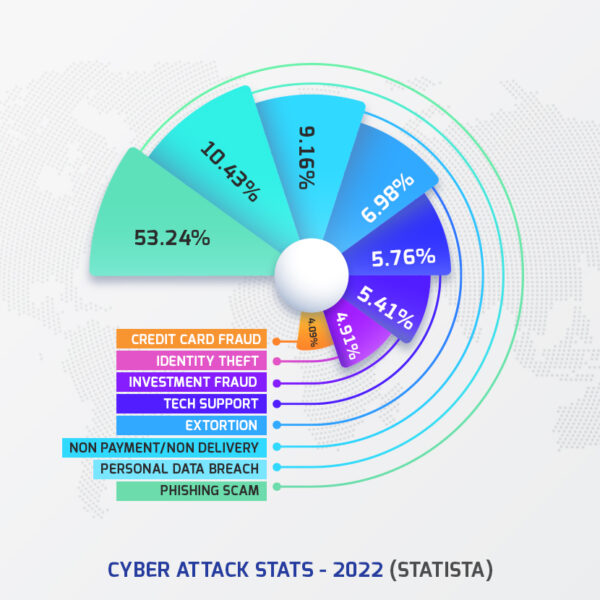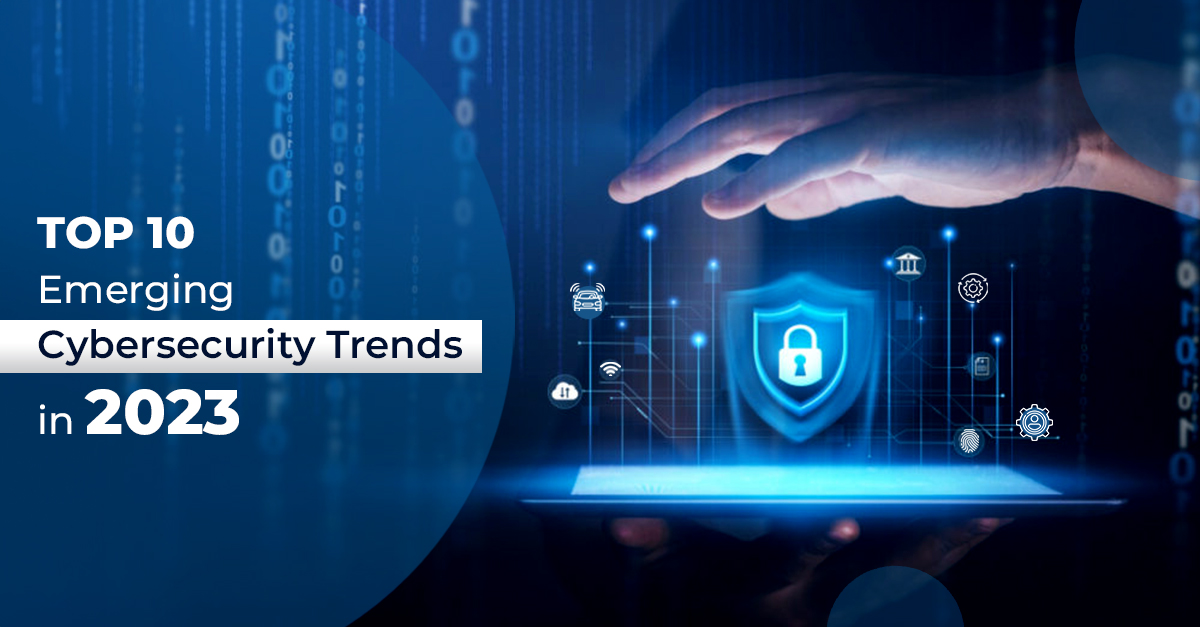Interconnected Digital World & Cybersecurity Trends
Today’s digital world is rapidly expanding, driven by revolutionary technologies like Artificial Intelligence (AI), the Internet of Things (IoT), and enhanced connectivity. These advancements offer unprecedented opportunities while presenting challenges in the form of sophisticated cyber threats. With the estimated global cost of cybercrime projected to reach a staggering 13.82 trillion U.S. dollars by 2028, there is an urgent need to address cybersecurity concerns. As we progress into the future, prioritizing cybersecurity measures and managing the human factor will continue to be critical in safeguarding our digitally interconnected world. Here are the top cybersecurity trends that will dominate the coming times.
1. Securing Autonomous Vehicles
The era of autonomous vehicles has arrived, ushering in unparalleled comfort and convenience, leveraging interconnected IoT devices and sensors for navigation and operation. However, these advancements also expose vulnerabilities that hackers may exploit to manipulate data, posing significant safety risks for passengers. Ensuring safer transportation and protection against cyber exploits with robust security measures and regular updates will be a priority.
2. Cybersecurity Trends in AI & ML
AI and ML have significantly transformed numerous industries, offering benefits such as enhanced automation, data analysis, and personalized user experiences. Moving forward, these technologies will play pivotal roles in intelligence-gathering and decision-making processes, potentially reducing human casualties and enabling better-informed strategies. However, cybercriminals are also exploiting AI algorithms for sophisticated attacks, evading traditional security measures and targeting critical infrastructures. Organizations will prioritize implementing robust cybersecurity measures to mitigate potential threats while responsibly harnessing AI and ML’s transformative capabilities.
3. Ensuring Cybersecurity for 5G Networks
The emergence of 5G technology promises unparalleled benefits, including improved connectivity and enhanced user experiences. Moreover, as we progress into the future, 5G’s software-based systems will continue to rapidly expand the network’s attack surface, providing cybercriminals with multiple unguarded entry points. Adopting strong cybersecurity measures will remain essential to prevent catastrophic breaches and to fully realize the transformative potential of 5G and other associated technologies like the Internet of Things (IoT) and autonomous vehicles.
4. Combating Insider Threats and Identity Abuse
Detecting and mitigating insider threats is an ongoing challenge, given the expanding attack surfaces and hybrid office environments. As we move forward, investing in robust Identity and Access Management (IAM) solutions will remain crucial in preventing identity abuse attacks and fostering a secure work culture.
5. Evolving Social Engineering Attacks
The rise of remote work during the pandemic has intensified social engineering attacks, with cybercriminals targeting remote employees. In the future, AI-powered attacks, such as “smishing”, “vishing” and “whaling” will become more convincing and challenging to detect. Organizations will focus on enhancing their defenses, raising awareness, and educating employees about evolving AI-driven threats to effectively mitigate risks in the ever-changing landscape.

6. Leveraging Automation and Integration
The exponential growth of data necessitates advanced automation techniques to efficiently control and manage vast information. Embracing automation empowers professionals to handle increasing data volumes while focusing on critical problem-solving and innovative endeavors. Integrating cybersecurity measures safeguards software applications against evolving threats, positioning automation and security as key pillars of the software development process.
7. Remote Work Challenges
The shift to remote work has given rise to significant cybersecurity concerns and challenges. As we proceed into the future, remote workers will remain vulnerable to cyberattacks due to less secure networks and devices. Implementing robust security measures, such as multi-factor authentication, secure VPNs, and comprehensive employee education on cyber risks, will remain crucial to effectively protect remote workers.
8. Strengthening Cybersecurity
Organizations must adopt a continuous approach to threat management and cybersecurity validation. As we move forward, this involves proactively addressing vulnerabilities in their security posture and refining cybersecurity optimization priorities. Inspired by digital immune systems, the concept of “identity fabric immunity” will strive for a balanced investment in prevention, detection, and response.
9. Simplifying Cybersecurity Operations
To address the expanding attack surface, organizations will seek operational simplicity through cybersecurity platform consolidation and security operating model transformation. Embracing composable security will present an innovative approach, integrating cybersecurity controls into architectural patterns within composable technology implementations, securing dynamic changes within businesses and their processes.
10. Human-centric and Board-Oriented Cybersecurity
As we navigate into the future, organizations recognize the need for balance between people, processes, and technology. Human-centric security design prioritizes employee experience throughout the control’s management life cycle, minimizing unsecured employee behavior is crucial for maintaining robust cybersecurity. Enhancing people management involves adopting human-centric talent management tactics to attract and retain skilled professionals. Furthermore, recognizing the significance of cybersecurity in governance and oversight, there is a growing mandate for board members to actively engage in cybersecurity matters. This trend highlights the need for additional cybersecurity expertise on boards to ensure informed decision-making and comprehensive governance.
Moving Ahead
As the digital landscape continues to evolve, the complexity and severity of cyber threats will persist. Throughout the coming times and beyond, organizations worldwide must prioritize cybersecurity measures and embrace transformative technologies responsibly to protect our interconnected world’s future. Addressing the human factor and adopting responsive ecosystems, restructuring approaches, and rebalancing practices are essential steps in safeguarding against ever-emerging cyber threats. By empowering professionals with the right tools and knowledge, organizations can dominate the complexities of the digital era with confidence and resilience.


